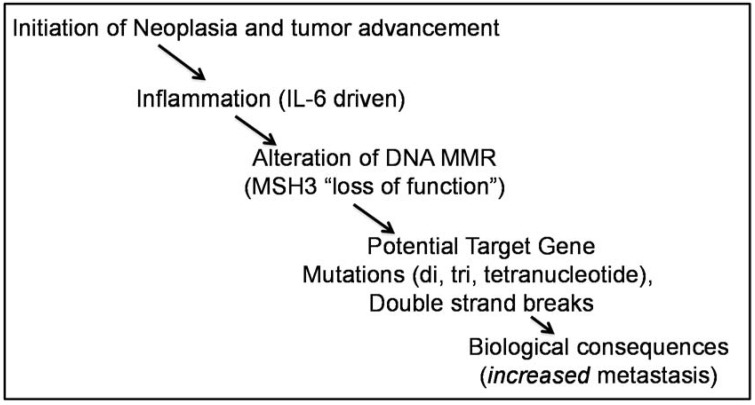Figure 3.
A model for modulation of the pathogenesis of colorectal cancer by EMAST. After the tumor has initiated, inflammation can modify the DNA repair function within the tumor through cytokine signaling, hypoxia, and oxidative stress. Evidence supports that Interleukin-6 can shift MSH3 protein from its nuclear locale to the cytosol, allowing accumulation of mutations and double strand breaks. It is believed that these genetic changes modify the tumor behavior, as patients with EMAST cancers present with advanced stage and are more likely to have metastasis.

